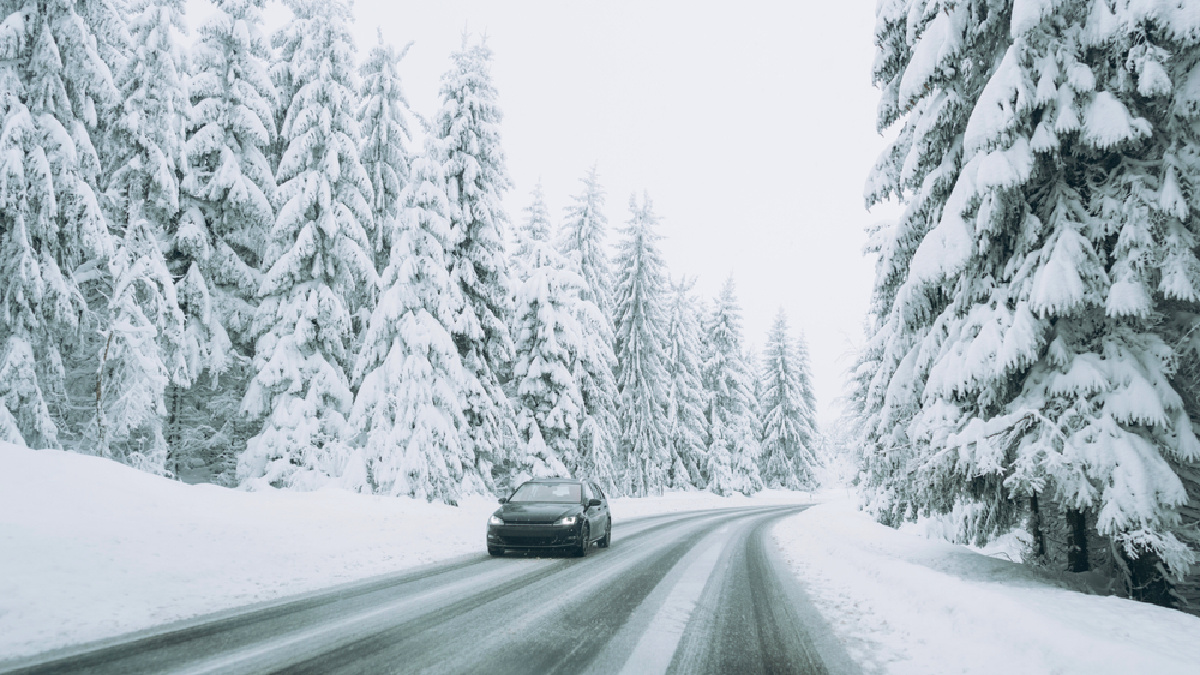Last Updated on January 9, 2024 by Kristin

Driving in extreme cold requires an extra skill set, from knowing how to navigate icy roads and how to de-ice a windshield. Even if the roads are cleared of ice and snow, extremely cold temperatures can affect a car’s oil, battery and tire pressure.
So, what qualifies as extreme cold? The National Weather Service defines it as near-freezing or below-freezing temperatures that can cause health problems including hypothermia or frostbite. Unfortunately, these temperatures can also cause problems with cars. To find out if an area is experiencing extreme cold, tune into local weather updates regularly to check for any wind chill advisories and warnings.
Here are tips to keep in mind when heading out in extreme temperatures.
Rent a car fit for winter weather.
When driving in extreme cold, try to avoid cars with rear-wheel drive (RWD). Popular on certain sportscar and truck models, RWD can cause the car to spin out in icy or wet conditions. If you plan to drive in the mountains or places with lots of snow, renting an SUV or car with all-wheel drive (AWD) or four-wheel drive (4WD) can make it much easier. However, finding a rental car with AWD or 4WD can be difficult, and can cost a lot more. A good rule of thumb is to rent the type of car you´re already comfortable driving, and be extra cautious.
Don’t idle the car for too long when warming.
While it might seem tempting to take a half hour to warm up the car before heading out in extreme temperatures, experts warn against idling cars for long periods. While this may have been good advice in the past, Consumer Reports notes that modern cars warm up faster when driving than idling. Of course, use common sense when heading out into extreme cold temperatures. If temperatures are so low that they could lead to frostbite within a few minutes, consider whether you need to go out at all. Never warm up a car in an enclosed garage.
Keep the car fueled up.
In extreme temperatures, it’s crucial to keep enough fuel in the car. The American Automobile Association (AAA) advises drivers to keep at least a half tank’s worth of gas in the car during the winter. This is not only because a car’s fuel economy declines in cold weather, but because having too little gas can lead to problems like its fuel lines freezing.
Monitor electric vehicle range.
Electric vehicles (EVs) and gas-powered vehicles alike experience a decrease in fuel economy during cold winter months. EV range can drop more than 40% in extremely cold weather, the DOE says. When driving an EV in extreme temperatures, you will have to keep a watchful eye on the car’s battery level and also be aware that charging could take longer.
Park indoors.
Parking indoors is one of the very best rules of thumb in extreme cold temperatures. Not only will you avoid having to dig your out a car in a snowstorm or scrape ice off of the windshield, but it helps keep the car’s battery and oil from getting too cold — issues that can keep the car from starting.
Monitor tire pressure.
As the mercury plunges, so can your car’s tire pressure. Consumer Reports reminds drivers to check any warnings on the dashboard for low tire pressure to avoid getting a flat. It’s always a good idea to ask about a rental car’s tire pressure at the office before driving off the lot — especially in the winter.
Pack an emergency kit.
When driving in extreme cold, take some time to put together an emergency kit with some essentials. Rental cars in colder regions should already have an ice scraper and brush in the trunk, but always check before heading out. The AAA advises bringing items including extra cold-weather clothes, blankets, water, snacks, flares, a first-aid kit, a flashlight and jumper cables. Make sure to keep your cell phone charged.
Follow tips for driving in ice and snow.
If you plan to drive a rental car in the winter, it’s important to know how to drive in ice and snow. For starters, it’s important to slow down and to leave extra space between your car and other vehicles. Never drive a rental car in dangerous conditions or during an extreme weather advisory.
Related:




